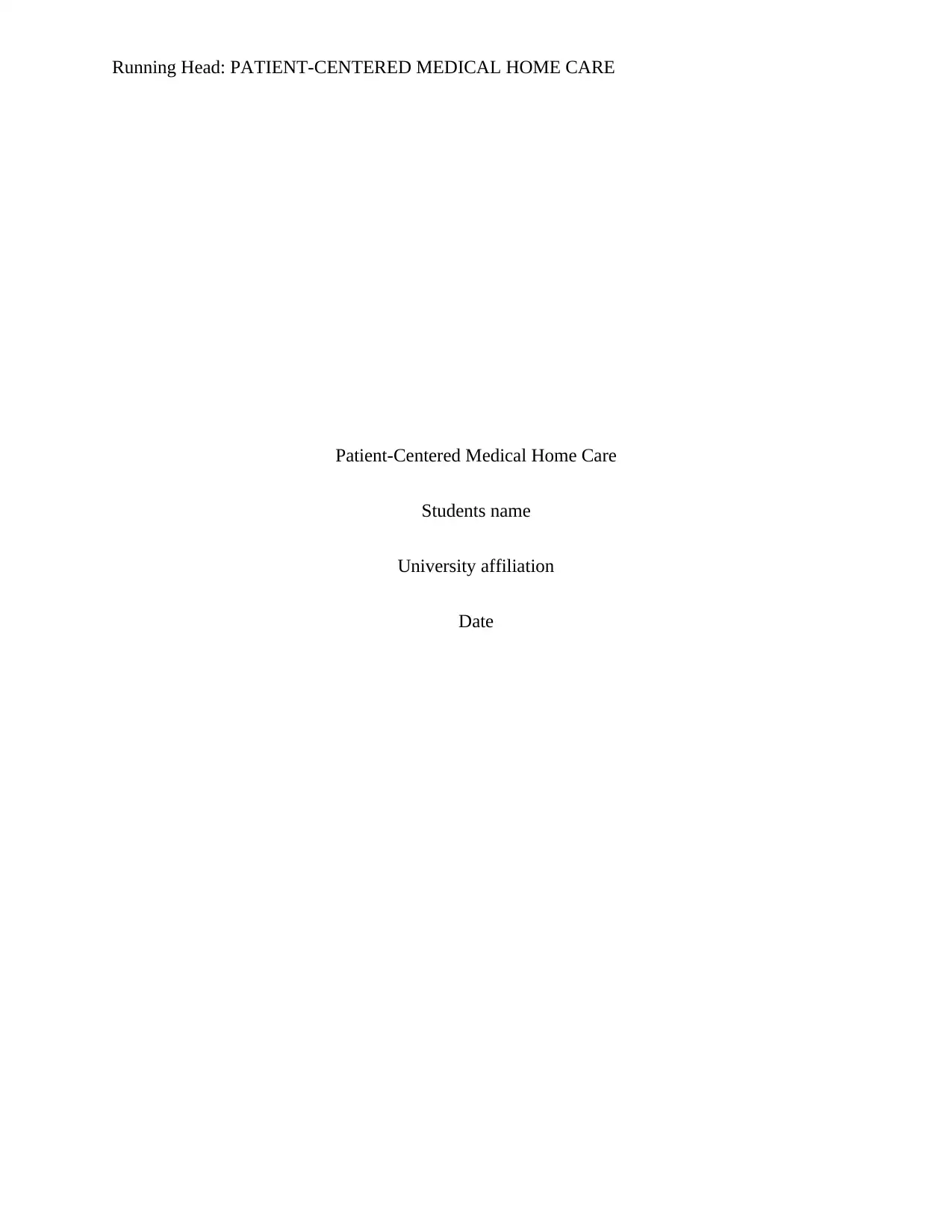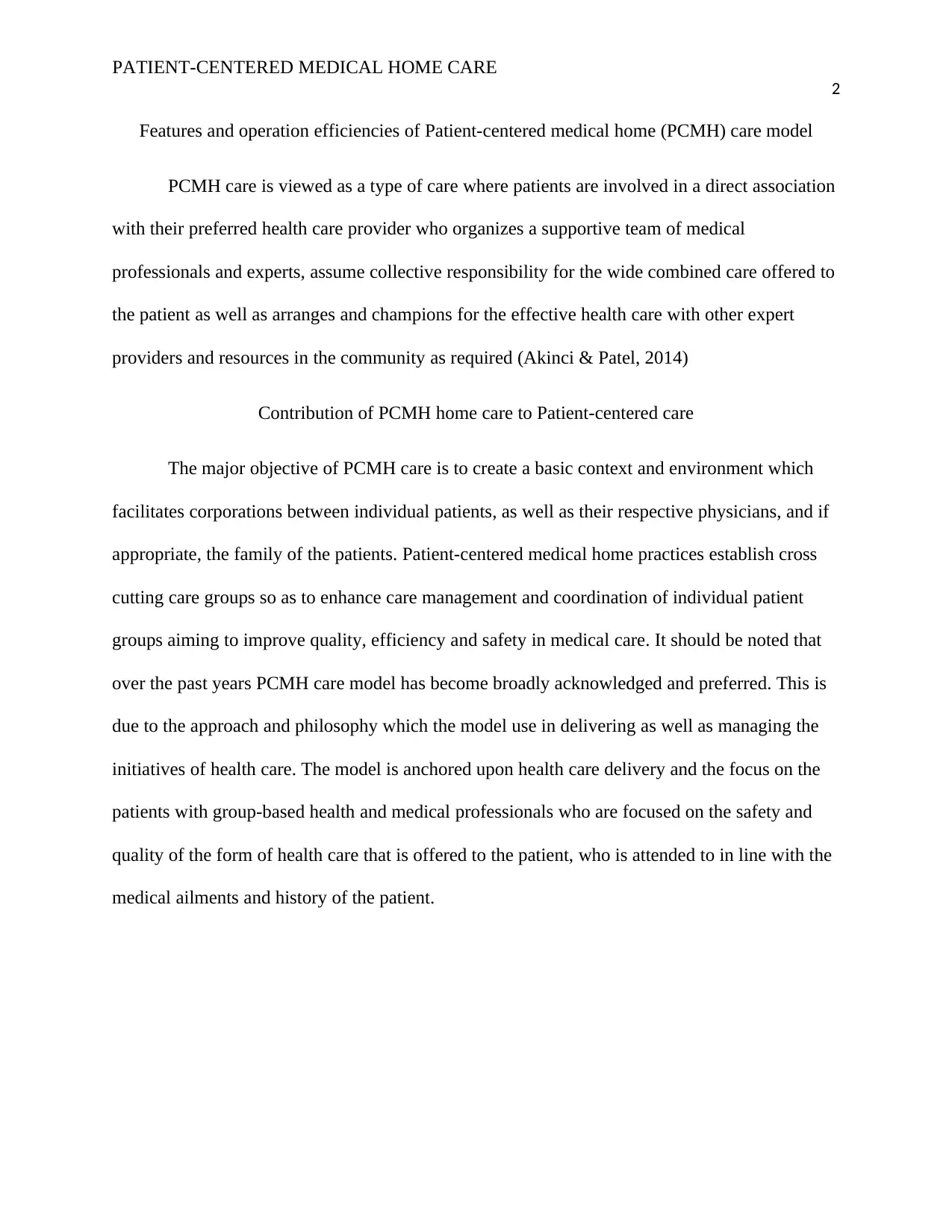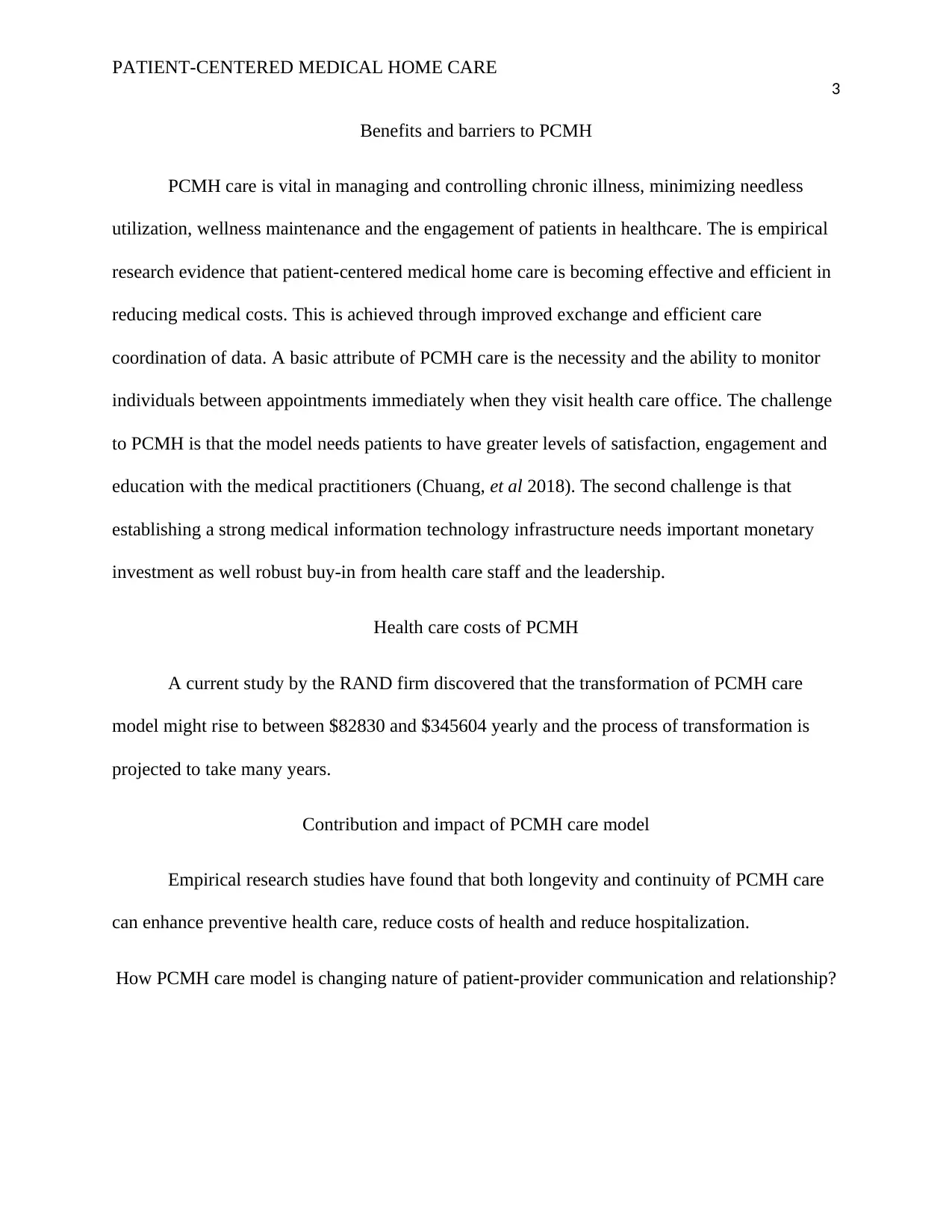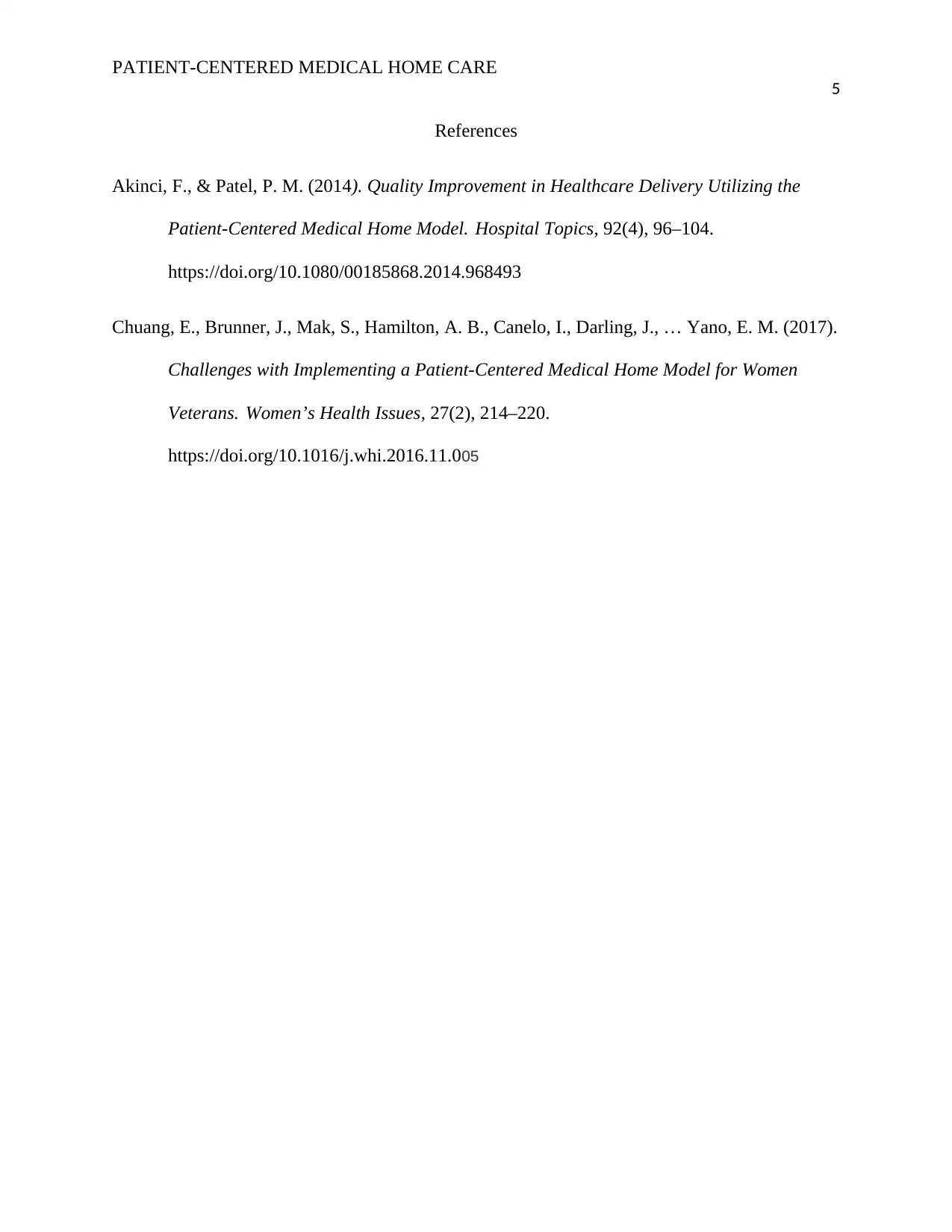Patient-Centered Medical Home Care: Benefits, Barriers, and Impact
VerifiedAdded on 2023/06/05
|5
|674
|71
Report
AI Summary
This report provides an overview of Patient-Centered Medical Home (PCMH) care, highlighting its features, operational efficiencies, and contributions to patient-centered care. It discusses the model's objective of fostering collaboration between patients, physicians, and families, and its role in enhancing care management and coordination. The report also examines the benefits of PCMH in managing chronic illnesses, minimizing unnecessary utilization, and promoting patient engagement, while acknowledging challenges such as the need for patient satisfaction and significant investment in IT infrastructure. Furthermore, it explores the impact of PCMH on healthcare costs, preventive care, and the evolving nature of patient-provider communication, emphasizing the increased interaction and mutual contribution between clients and healthcare providers. The document concludes by referencing empirical research supporting the effectiveness of PCMH in improving healthcare outcomes.
1 out of 5











![[object Object]](/_next/static/media/star-bottom.7253800d.svg)